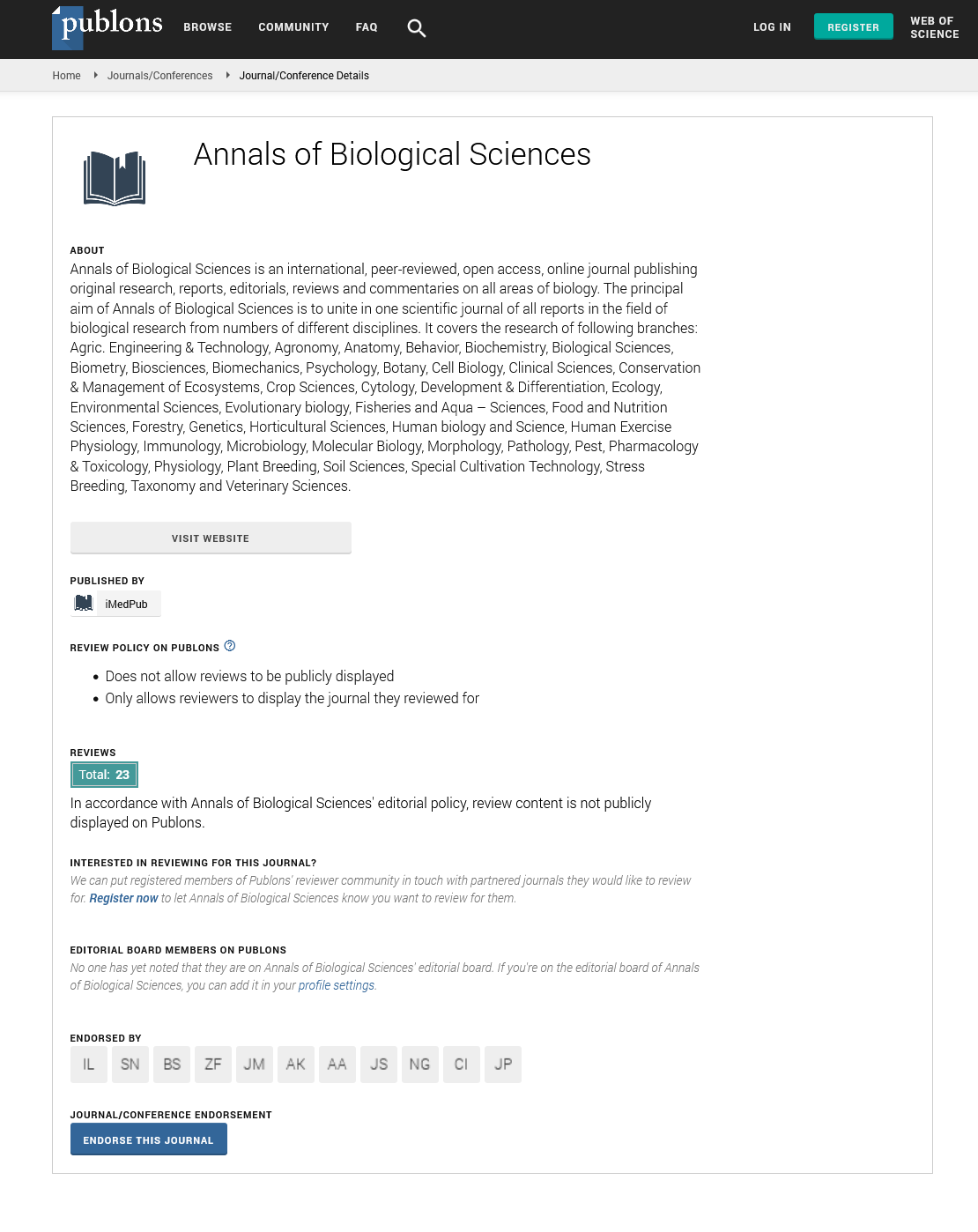ISSN : 2348-1927
Annals of Biological Sciences
Abstract
Chemical Contamination in Food
Food contamination is a major problem since the high concentration of toxins in food offers severe health concerns. Protecting the
population against the varying degrees of toxicity of tainted foods has become a difficult challenge. This article discusses the origins,
forms, and health consequences of chemical contamination in food. Food contamination might be caused by naturally existing pollutants
in the environment or by contaminants introduced purposefully by humans. Food contamination is also caused through the stages of
food manufacturing, packaging, transportation, and storage. These chemical pollutants have serious consequences for human health,
ranging from mild gastroenteritis to deadly instances of hepatic, renal, and neurological disorders. Chemical pollution is a clear indicator
of the presence of chemicals where they should not be or are present in a higher quantity than that which is assigned as safe. Chemical
risks are one of the leading sources of food contamination and foodborne illness outbreaks. Chemical pollutants come from a variety
of sources, including soil, the environment, disinfection byproducts, personal care products, air, water, and packaging material. Almost
all mass-produced daily items, such as disinfectants, plastics, detergents, deodorants, insecticides, and so on, are inhibited by chemical
pollutants. Even the food we eat and the water we drink are vulnerable to the intrusion of pollutants in dangerous amounts.
Author(s): Tang Li*
Abstract | PDF
Share This Article
Google Scholar citation report
Citations : 406
Annals of Biological Sciences received 406 citations as per Google Scholar report
Annals of Biological Sciences peer review process verified at publons
Abstracted/Indexed in
- Google Scholar
- China National Knowledge Infrastructure (CNKI)
- WorldCat
- Publons
- ROAD
- Secret Search Engine Labs
Open Access Journals
- Aquaculture & Veterinary Science
- Chemistry & Chemical Sciences
- Clinical Sciences
- Engineering
- General Science
- Genetics & Molecular Biology
- Health Care & Nursing
- Immunology & Microbiology
- Materials Science
- Mathematics & Physics
- Medical Sciences
- Neurology & Psychiatry
- Oncology & Cancer Science
- Pharmaceutical Sciences
